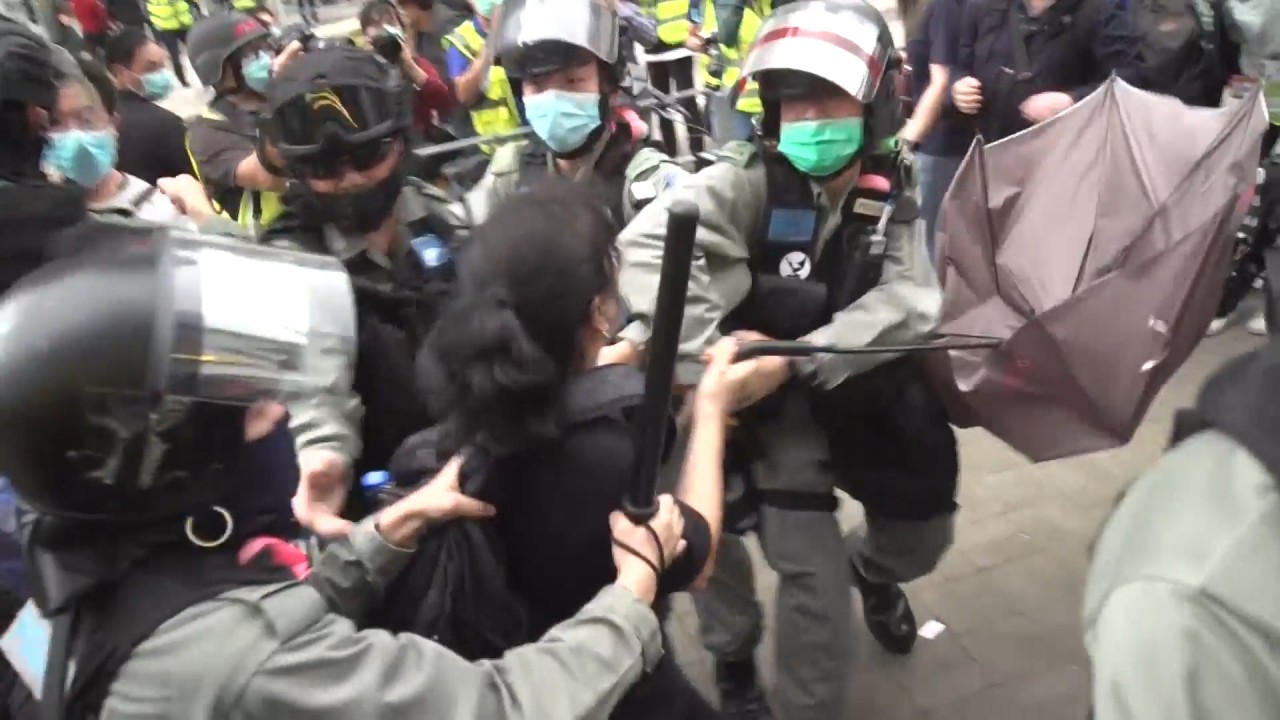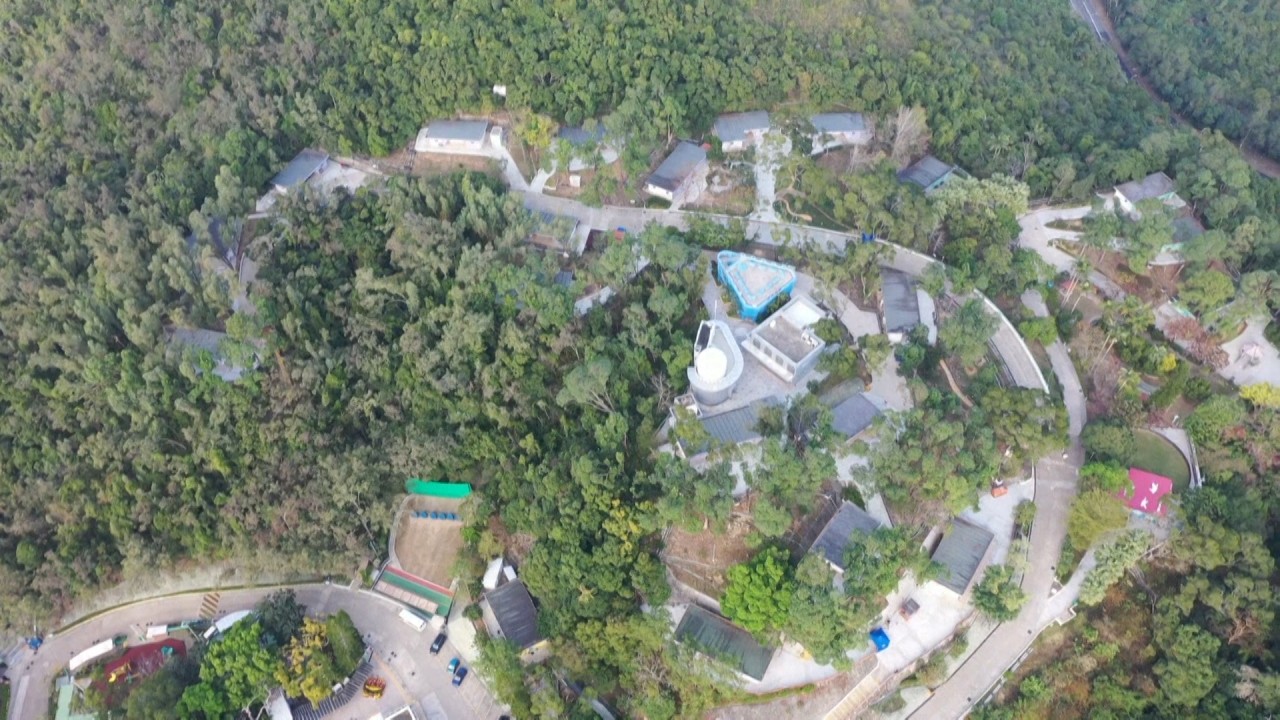
02:39
Hong Kong coronavirus protest: Disruption near quarantine sites close to residential areas

Dealing with objects thrown from a tower block, routine verbal abuse and suicide attempts are some of the challenges faced by staff and volunteers who kept Hong Kong’s quarantine centres running for the past five months.
As the city turns a corner in its war against the coronavirus, marking more than two weeks free of local infections on Sunday, the government has announced the closure of its largest facility.
Public workers have lifted the lid on life inside designated quarantine camps, with stories of a children’s drawing competition to lift their spirits, as well as the pride felt by personnel who kept the city safe from Covid-19.
Hong Kong adopted a 14-day quarantine measure in January to isolate those deemed to be close contacts of patients, as well as arrivals from high-risk places.

02:39
Hong Kong coronavirus protest: Disruption near quarantine sites close to residential areas
As of Sunday, 9,579 people have stayed at official quarantine facilities, 2,992 of whom are close contacts of confirmed cases. Of this total, 220 have later been confirmed as infected.
Currently, three centres are in operation – Junior Police Call Permanent Activity Centre and Integrated Youth Training Camp in Pat Heung; Lei Yue Mun Park and Holiday Village in Chai Wan; and Chun Yeung Estate in Fo Tan. They provide 2,323 units. A new facility at Penny’s Bay is expected to provide about 700 units in late July.
With the local health crisis waning and the city’s tally at 1,199 cases by Sunday, the government has announced that its largest centre, Chun Yeung Estate, will cease operations by late July and be converted back into public housing.
However, a recent surge in imported cases, reaching 69 alone last week, has highlighted the importance of the continuous presence of quarantine facilities.

Dr Cecilia Fan Yuen-man, a Department of Health consultant, has overseen quarantine efforts with other top officials. Fan recalled hastily putting together an army of health workers after the pandemic hit the city in late January.
She said so far 600 staff members, including 100 doctors and 250 nurses, from almost all branches of the department such as elderly and student health services, medical device, social hygiene as well as tuberculosis and chest services had been mobilised to form medical stations at each quarantine centre, comprising three doctors and six nurses on average.
“It can be said that the entirety of the health department has been geared towards fighting the disease,” Fan said. “The most challenging period was when there were five quarantine centres in full swing at the same time at the peak of the pandemic. It was all hands on deck.”
Volunteers from the Civil Aid Service and Auxiliary Medical Service were also called in. The public workers’ duties on a typical day involved taking deep-throat saliva samples from those quarantined for Covid-19 tests, delivering meals and sometimes even counselling.
Dr Millicent Leung Lai-kuen, a senior medical officer in the health department who was just an aspiring young doctor during the severe acute respiratory syndrome (Sars) outbreak in 2003, said many people did not understand why they had to undergo quarantine at a government centre, often arguing they were from low-risk areas, while some struggled to adapt to an unfamiliar environment away from home.

01:10
Hong Kong sets up coronavirus quarantine centres at two holiday villages
“Some swore at us and said the centres were like prisons. Some even threw things at us from height,” she said. “One grabbed a manhole cover and wanted to throw it at us.”
Leung recalled a family in which the father was due for urgent chemotherapy. “His wife and child sat in front of me and hugged each other saying they wanted to kill themselves. They got very emotional because they feared there would be no healthy food for the father in the few days before his crucial surgery. It was all very tough and challenging.”
Yan Ching-man, a volunteer nurse from the Auxiliary Medical Service, said the key to changing hearts and minds was patience, empathy and love.
Often drenched in sweat in her full protective gown under the summer heat, Yan said her outfit often frightened small children. To put them at ease when taking their temperature or saliva samples, she would approach parents or older siblings first so the younger ones could see what the process involved. She would also use a cute voice when interacting with them.
Ho Wing-hei, senior operations and training officer at the Civil Aid Service, agreed and said special attention had to be paid to religious and cultural sensitivities for those under quarantine.
Meals, for example, had to be delivered to Muslims before 4am during their fasting month of Ramadan, or they would not be able to eat at all that day.
Ho said a drawing competition was organised in collaboration with a local NGO to let children have some fun and commemorate religious dates under lockdown. “Often, solving a family problem and their emotions starts with the kids.”
Dr Francis Ho Kam-wai, a veteran who has served in quarantine centres during major public health battles in the past two decades, including Sars, swine and avian flu, as well as the Middle East respiratory syndrome outbreak, said there had been improvements such as better-fitting N95 masks and protective equipment. But Ho added there were unique challenges in the current fight.
The senior medical and health officer said: “The length and breadth are very different from before. It was one or several weeks in the past, but this time it’s five months and counting. In terms of breadth, we have served close to 10,000 people.”
Despite the health risks, personal sacrifices and not knowing when the Covid-19 battle would end, the health workers said they had no regrets and were proud to serve Hong Kong in its hour of need.
“I have experienced a wide mix of feelings. Every day I go home feeling weary and sometimes I can’t hold back the tears. Sometimes my dreams are still about work in quarantine centres,” Leung said.
“But I’ve really grown a lot through this, and am very honoured to have done some real work for Hong Kong.
“I will probably still think of this time and savour these memories for many years to come.”